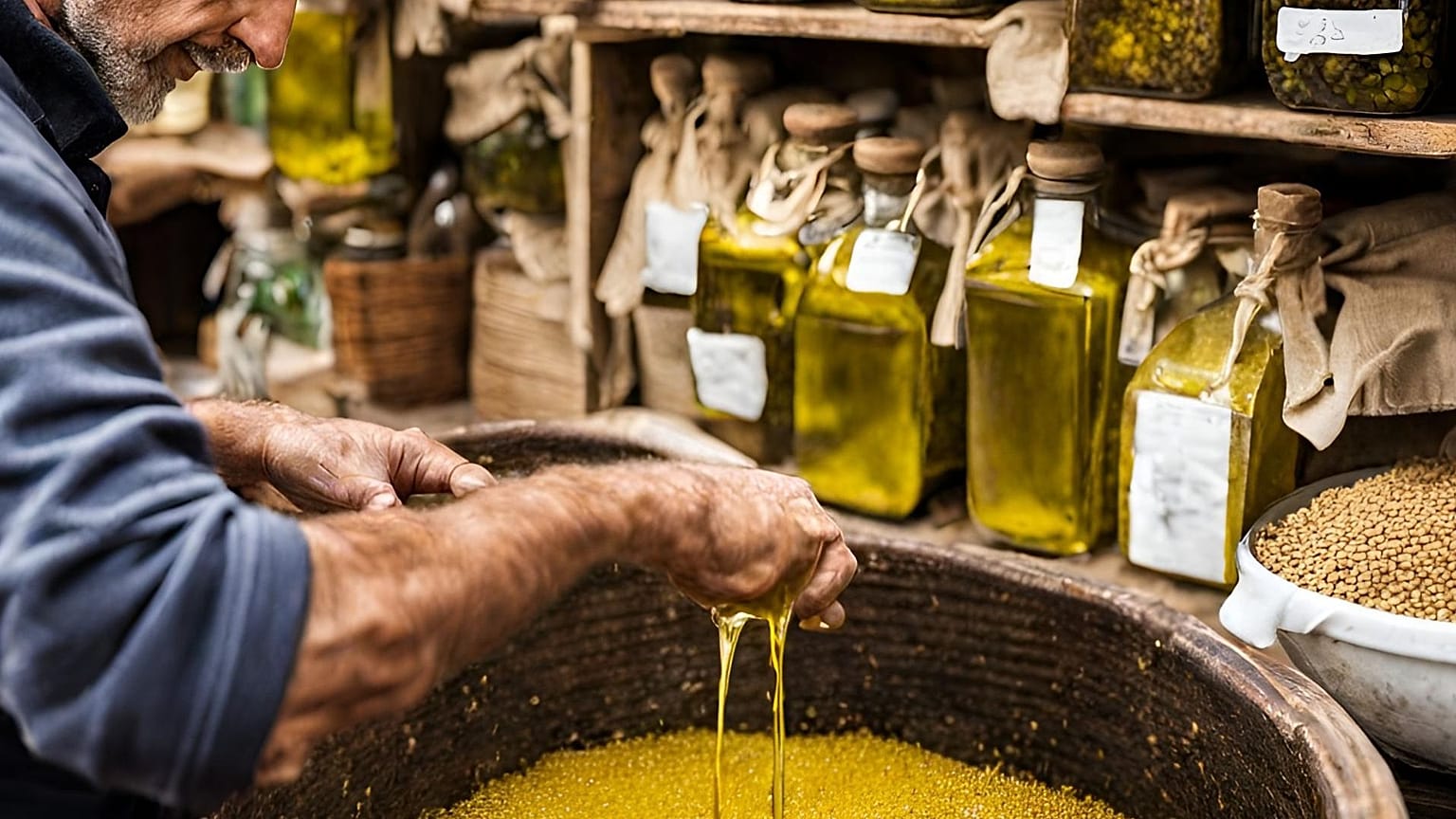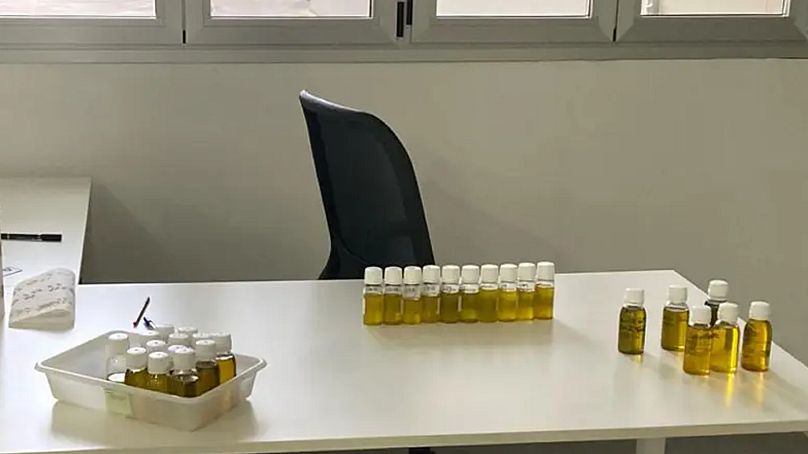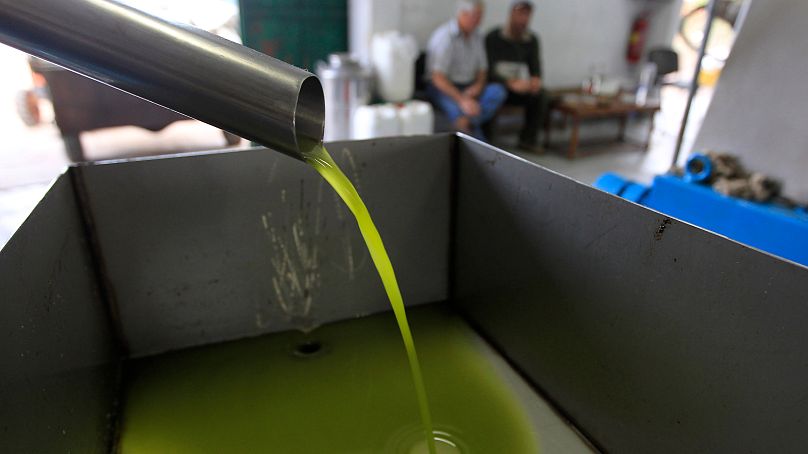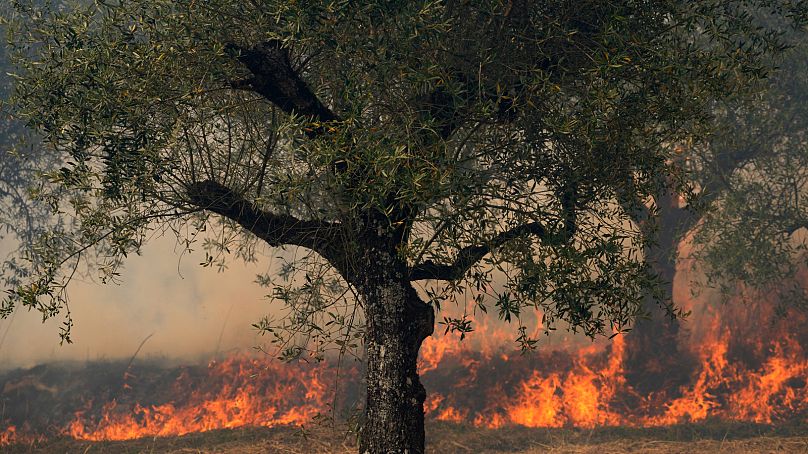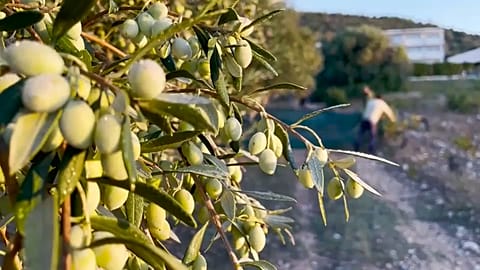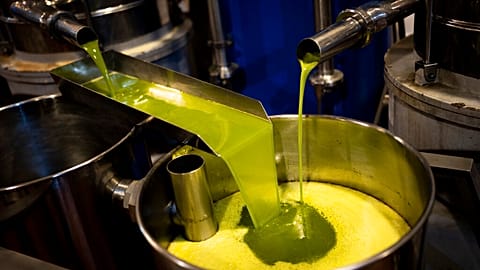Olive oil shortages and skyrocketing prices have created the perfect breeding ground for fraudulent producers
If you order extra-virgin olive oil at the restaurant these days, you better check the label carefully.
According to Europol, selling fake olive oil has become a "common practice".
The warning came after authorities seized 260,000 litres of counterfeit product in coordinated raids across Italy and Spain, in November.
Less than two months later, around fifty restaurants came under investigation for the same reason, in Rome, sparking new alarms.
How do you tell if an olive oil is authentic?
Some fraudsters are substituting the precious "liquid gold" with much cheaper seed oil.
Seed oil is transparent, so they colour it with chlorophyll, to add green tints, and use carotenoids to obtain yellow traits. This creates an olive oil-ish colour.
However, even if they look similar, big differences remain.
Seed oil has no flavour or smell, while "olive oil is never tasteless. It can be more or less sweet, bitter or zesty, but will never be tasteless", Food Science professor Maurizio Servili tells Euronews.
"Anyone who has tried olive oil at least a couple of times would be able to tell the difference. It is the Polyphenols that give it its peculiar taste."
Easy tests spot dodgy blends
The scam may be a bit harder to spot if seed oil gets mixed with some actual olive oil.
In these cases, "simple analysis can unmask the fraud. Like the fatty acids composition test, or the sterol composition, as well as the spectrophotometric constants", says professor Servili.
It's actually legal, in some countries, to sell this type of blend, but the amount of olive oil in the bottle needs to be clear on the label, and the product cannot be called "olive oil".
Other scams use a mix of olive oil and "lampante oil", which is called this because of its historical use as a fuel in oil lamps. It's a lower-quality olive oil, unsuitable for consumption due to its high acidity.
Judge the oil by the cover
When buying or ordering extra-virgin olive oil, always vet out the information on the bottle.
Make sure there's a date and location for the harvest, check if you can scan a QR code to trace the production chain, and look up for seals from a third-party certifier, tester or consortium, like DOP or IGP.
"The most advanced oil consortiums use blockchain systems for traceability", says Sabina Petrucci, an Italian olive oil producer. But she adds that "checks are never enough" and consumers should be made "more aware" of the existence of such traceability tools.
'Perfect storm' for olive oil market
Fake oil schemes are spreading rapidly because of a severe global shortage.
"Production has collapsed in the last couple of years", says Servili. "In 2023 only, we lost between 20 and 25% globally."
The main culprit is extreme drought in the Mediterranean, a region that accounts for nearly 90% of the world's extra-virgin olive oil output.
"Spain, Greece, Italy, Tunisia...they were all hit. And this year might be even worse. Water resources are running extremely low".
It sent prices soaring. "Standard extra-virgin olive oil used to cost between €3 and €5 per litre at the supermarket. Now it's between €10 and €12".
It's made it much easier for scammers to sell their products, with the complicity of dishonest restaurants, who "know what they're buying", according to Servili.
"There's always been a market for fake olive oil. But now it's becoming more powerful because restaurants don't want to pay for current olive oil prices".















